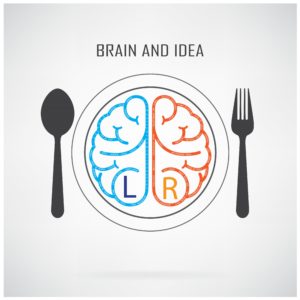MindCheck is the Weekly Wednesday Kids Mental Health series with Dr. Ray Pataracchia N.D. MindCheck provides in depth information on the orthomolecular approach to coping with mood, behavior and psychotic disorders. The MindCheck Health Series is endorsed by the Mindful Network – ‘A Better Future for Children’s Mental Health’.

… In ADHD and learning disability we might see the right brain copper dominant characteristics of visuo-spatial creativity standing in stark contrast to the left brain dominant characteristics of verbal-analytical intellectualism that are highly regarded in schools in evaluating academic performance.
Left Brain, Right Brain: Orthomolecular Aspects
Left Brain – Right Brain Theory
This theory claims that one side of the brain controls different types of thinking processes than the other and that some people prefer one type of thinking versus the other. This dichotomy of thinking is based on the theory of brain function lateralization.
Despite the fact that modern researchers have debunked lateralization theory (due in part to findings that both sides of the brain are required to process thoughts), I continually see patients who are dominant in copper with right brain characteristics that improve post-treatment.
Right Brain Characteristics
According to lateralization theory, the right brain is in control of the more expressive/creative aspects including intuition, subjective and thoughtful thinking. Specific right brain characteristics may include face recognition, emotional expression, reading emotions, and an affinity for color/image dynamics and music.
Left Brain Characteristics
According to lateralization theory, the left brain is in control of logical, objective or analytical thinking. Language, math/numbers, critical thinking, and reasoning are said to be more left brained.
Right Brain Copper Dominance: Orthomolecular Treatment Approach
Zinc and copper are associated with left brain – right brain dominance and mental health pathology.
Orthomolecular Medicine can be used to eliminate heavy metals including copper. In most cases, the elimination of metal toxins must be done gradually to avoid the excessive spill-over of toxins to the bloodstream; metals that are mobilized in the bloodstream need to be eliminated efficiently and this job falls on the liver, kidney, and bowel. In clinical practice, we support the thyroid, adrenal, liver, kidney, and bowel to maximize the efficient removal of the metal via primary gastro-intestinal and biliary routes. Kids with toxic metals need to avoid environmental exposures which include sources of metal ingested daily in our food supply.
Copper Toxicity is Prevalent in Behavior Disorders, Depression, & Anxiety
Copper toxicity is routinely found in lab results, during childhood or adulthood. This is a common trait amongst all sectors of mental health including schizophrenia, depression, anxiety, bipolar, OCD, ADD, ADHD, learning disability, and dyslexia.
A good example of a copper dominant trait seen in ADHD/learning disability/dyslexia is exemplified in hand writing changes pre- and post- orthomolecular treatment. Good responders experience improvement hand writing (often dramatic improvement), emotional stability, grades, and attention span
Copper’s role in the formation of oxidized serotonin intermediates might play a role in altering mood, behavior and sleep quality. It seems that serotonin’s opposing neurotransmitter system, the catecholamine system (dopamine, nor-epienephrine, epinephrine), is elevated in copper toxicity. Copper excess causes dopamine levels to rise because copper is a cofactor of dopamine synthesis. Copper can therefore over-stimulate the brain and paranoia is also associated with copper elevation.
Blood estrogen levels rise when copper is in excess and may be associated with female hormonal depression. Copper toxic patients typically have adrenal and thyroid compromise which encourages copper retention. Niacin, vitamin C, and zinc are important nutrients in copper toxic people because they are physiologically antagonistic to copper.
Gender Variations
Men may typically be more left brained with zinc dominance. Conversely, it is not uncommon to see women that are extremely emotional and creative with right brain copper dominance.
Copper Sources
Sources of copper include copper tea pots, copper sulphate treated jacuzzi’s or swimming pools, drinking water, and prenatal vitamins. Drugs such as neuroleptics, antibiotics, antacids, cortisone, Tagamet®, Zantac®, and diuretics can exacerbate copper overload. Copper is abundant in food and water as it is found in soil, pesticides, and animal feed. Since World War II we have been exposed to greater levels of copper due to copper piping implemented in modern homes and, due to widespread use of birth control pills (estrogen) which maintain high systemic copper levels that are thought to transfer via placenta, from generation to generation.
Copper Deficiency
Copper deficiency is an emergent finding in the mental health population of today. Copper deficiency is quite common perhaps due to an emerging copper deficient food supply; this stresses the need for orthomolecular treatment balance; copper deficiency is commonly seen in poorly motivated kids and adults and predisposes us to arterial compromise (aneurysm risk).

